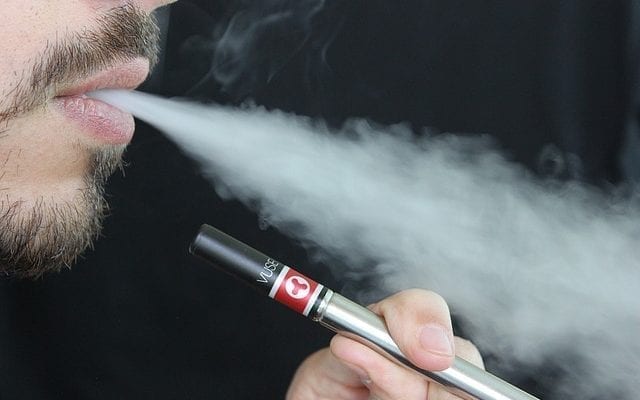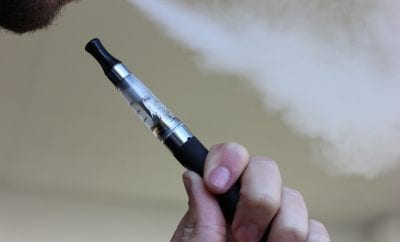
News
Study shows teens are inhaling cancer-causing chemicals from e-cigarettes
In a study conducted at the University of California, San Francisco, researchers have found a presence of cancer-causing chemicals in e-cigarette users, the same found in those who smoked traditional cigarettes. The study examined 104 adolescent participants, some of whom participated in smoking e-cigarettes, others who smoked e-cigarettes as well as traditional cigarettes, and those who did not smoke at all.
The results showed that those who smoke e-cigarettes had three times the levels of toxic compounds than those of a non-smoker. According to Mark Rubinstein, the lead author of the study, “the vapor produced by e-cigarettes is not harmless water vapor, but actually contains some of the same toxic chemicals found in smoke from traditional cigarettes.” These figures even held when the e-cigarettes did not contain nicotine. The toxicity of the non-nicotine e-cigarettes is caused by the propylene glycol and glycerin, both of which are used to help preserve the flavor of them.
Other compounds found in those who smoked e-cigarettes included acrylonitrile and acrolein, both of which are highly toxic to the human body. According to the Environmental Protection Agency, acrolein can play a part in causing lung cancer. Acrylonitrile has been shown to be a highly poisonous compound that is used in plastic, adhesives and synthetic rubber manufacturing, according to the National Center for Biotechnology Information.
Manufacturers of these e-cigarettes and e-juice have long maintained that they are safe when compared to traditional tobacco. However, this is not the first study to come out that disproves these claims. Many have turned to using e-cigarettes in order to help them fight nicotine addiction and to stop using tobacco products, but the number of teens who have began to use them has grown exponentially.
Public health groups like the Surgeon General’s office and the Centers for Disease Control and Prevention have spoke out against the dangers of adolescents becoming addicted to nicotine from vaping and smoking e-cigarettes. Several studies have shown that kids who use them are more likely to later on try tobacco product.
“Teenagers should be inhaling air, not products with toxins in them,” Rubinstein said in a statement. “While they may be beneficial to adults as a form of harm reduction, kids should not be using them at all.”
According to recent studies conducted by the CDC, it has been shown that 20 percent of high school students have said they have used e-cigarettes, with 11 percent saying they have used an e-cigarette in the past 30 days of the survey.
Recently, a bill was passed in California placing tighter restrictions on e-cigarettes. You must now be 21-years old to purchase e-cigarettes, and they are banned in all the same places as cigarettes, including workplaces, schools, restaurants and hospitals. Despite this, teens are still getting their hands on e-cigarettes, and are continuing to use them despite the new restrictions.
In a statement by state Senator Mark Leno, he says “Ensuring that e-cigarettes fall under California’s comprehensive smoke-free law is critical to protecting public health, especially given the alarming rate at which young people are picking up these devices.”





0 comments